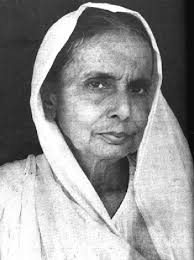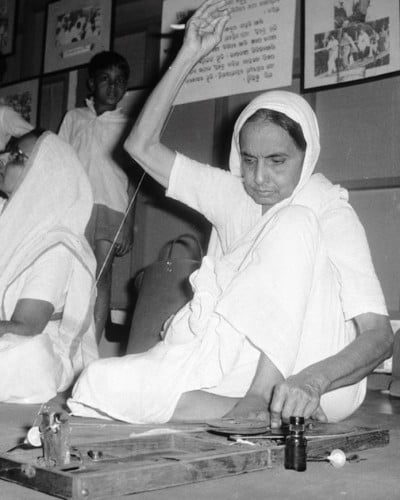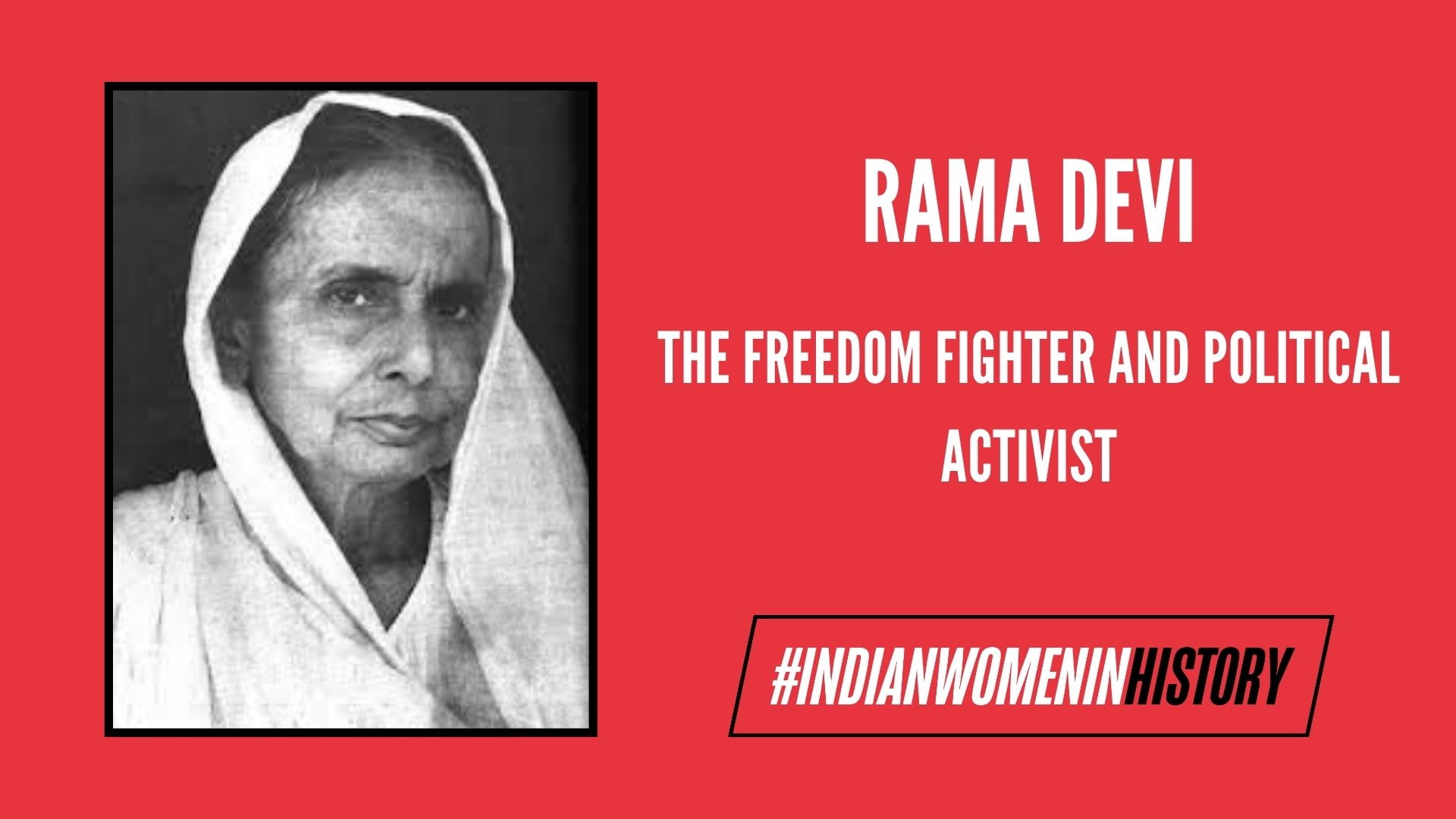Rama Devi is a freedom fighter from India’s independence movement. Inspired by the Swadeshi Movement in her childhood, she became an organiser, worker, campaigner, speaker and writer who worked tirelessly to uplift women and other marginalised sections of society. Women’s History Month calls for us to look back at this woman’s life and work, as she stands as one of the most admired names in Odia history.

Rama Devi was born in the Cuttack district of Odisha on December 3, 1899, to an aristocratic family. She grew up enthused by her uncle’s ideas, Utkal Gourab Madhusudhan Das, a lawyer, social reformer and public figure in Orissa, and of the Indian philosopher, Aurobindo. Guided by this, Rama Devi found a purpose in community betterment and pledged her life to it soon after her marriage at 15 to Gopabandhu Choudhari. Both husband and wife would later become renowned for their work in the freedom struggle in Odisha.
A Nationalist Icon
On March 23 1921, Rama Devi attended a meeting of women in the Binod Bihari Temple in Cuttack, where she heard the Mahatma and Kasturba Gandhi. The meeting was symbolic, marking the first-ever public gathering in Odisha exclusively for women, attended by individuals of such high political stature. For Rama Devi, it signified the beginning of her life as a Gandhian and as a khadi-clad beacon for freedom-fighting women across the subcontinent.
Alongside nationalism, Rama Devi was actively involved in eradicating untouchability, establishing the Harijan Sevak Sangha in Cuttack, and going from village to village on foot to gather volunteers and donations.
In subsequent years, she conscientiously mustered crowds of women to attend various sessions of the Indian National Congress and to march during the Salt Satyagraha in 1930 actively. During the Civil Disobedience, she would routinely tour the Srijang and Inchudi areas in the Balasore district, among other regions, to mobilise supporters for the cause. For their involvement, Rama Devi and several other women were arrested at the end of the year, later released in 1931 after the Gandhi-Irwin pact.
Also read: Kallumala Samaram: A Turning Point For Caste-Based Sartorial Politics In Modern Kerala
Alongside nationalism, Rama Devi was actively involved in eradicating untouchability, establishing the Harijan Sevak Sangha in Cuttack, and going from village to village on foot to gather volunteers and donations. She later marched at Gandhi’s Harijan Padiyatra, starting on May 9, 1934, from Puri, winning the awe of many, including Gandhi, for her resilience.

“I have marvelled at how Smt. Rama Devi and her girls have discharged themselves during the tour, which was undoubtedly pleasant and easy, had undoubtedly its trials. But these ladies have not known what fatigue is? Nowhere have I seen anything quite like what Smt. Rama Devi and her little band have been found to do so gracefully and so naturally. They have never needed or claimed any special privilege.” – Mahatma Gandhi, 1934
In 1952, she allied herself with the Bhoodan and Gramdan movements initiated by Vinoba Bhave, traversing over 4000 kilometres across the state of Odisha to propagate the donation of land to the oppressed and impoverished.
In Bari’s village, Rama Devi set up her ashram called Sebaghar, dedicated to improving its villagers’ lives by promoting education, Khadi production and other economic activities, alongside campaigns on untouchability and women’s awareness. She was imprisoned for two years during the Quit India Movement, but this in no measure dimmed her allegiance to struggle and reform. For her diligent work over the years, Rama Devi is fondly identified as the Maa of Odisha.
Also read: Therigatha: The First Writings Of Our Ancestresses
A Relentless Force
The years after Independence saw Rama Devi move away from mainstream politics towards a genuine involvement in the landless and the poor’s lives. In 1952, she allied herself with the Bhoodan and Gramdan movements initiated by Vinoba Bhave, traversing over 4000 kilometres across the state of Odisha to propagate the donation of land to the oppressed and impoverished. Over the next twenty years, she established an Utkal Khadi Mandal, a Teacher’s Training Centre, a Tribal Welfare Centre, and a Shanti Seva Mandal. Additionally, she had been involved in famine relief work during the devastations of 1951 and 1962 and had provided volunteer services for the Indo-China War. During this time, Rama Devi met Tulasi Munda, an Adivasi activist of education, and both women briefly collaborated in their efforts towards female upliftment.
During the 1971 Bangladesh crisis, Rama Devi prepared a delegate of volunteers who went to the western Dulajpur district, distributing food and water to those who had been rendered homeless. In the latter half of the 1970s, she took over the Acharya Harihar Das Trust reins and the Sarvodaya Sabha, two organisations committed to social welfare activities. During the years of Emergency, Rama Devi set up her newspaper under the Gram Sevak Press, which was later banned, resulting in her arrest. Having experienced the life of prison before, the arrest only made her more determined in her fight against injustice.
Legacy
In 1969, the Government Women’s College in Bhubaneswar, which would become the first women’s university in Odisha, was renamed Rama Devi Women’s College to pay tribute to her devotion to the upliftment and education of women, among other social groups. Rama Sevi was one of the freedom fighters from India’s independence movement.
Also read: Yes, Gandhi Was No Feminist But Should We Cancel Him For It?
A Name To Reckon With
For her work, Rama Devi was nominated for the Padma Shree. However, she declined the award, despite insistence from the State Government of Odisha, followed by several other recognitions bestowed by the government and other prestigious organisations. She continued to denounce them; and believed her achievements as her continuous efforts to eradicate oppression and infringement. She set up a primary school called Shishu Vihar, and then a cancer hospital in Cuttack. Rama Devi breathed her last on July 22, 1985. Her spirit, however, continues to persist in the pages of history, while her name remains memorialised through the museum set up in her honour within the Rama Devi Women’s University in 2015.
Saanika is recently graduated Master’s History student, currently pondering the next step in her life. A person guided by creativity and imagination, with a passionate interest in reading and writing, travelling and exploring. She is strongly driven by the philosophies of feminism, individualism, and social equality. You can find her LinkedIn and Facebook.
Featured Image Source: Feminism in India




